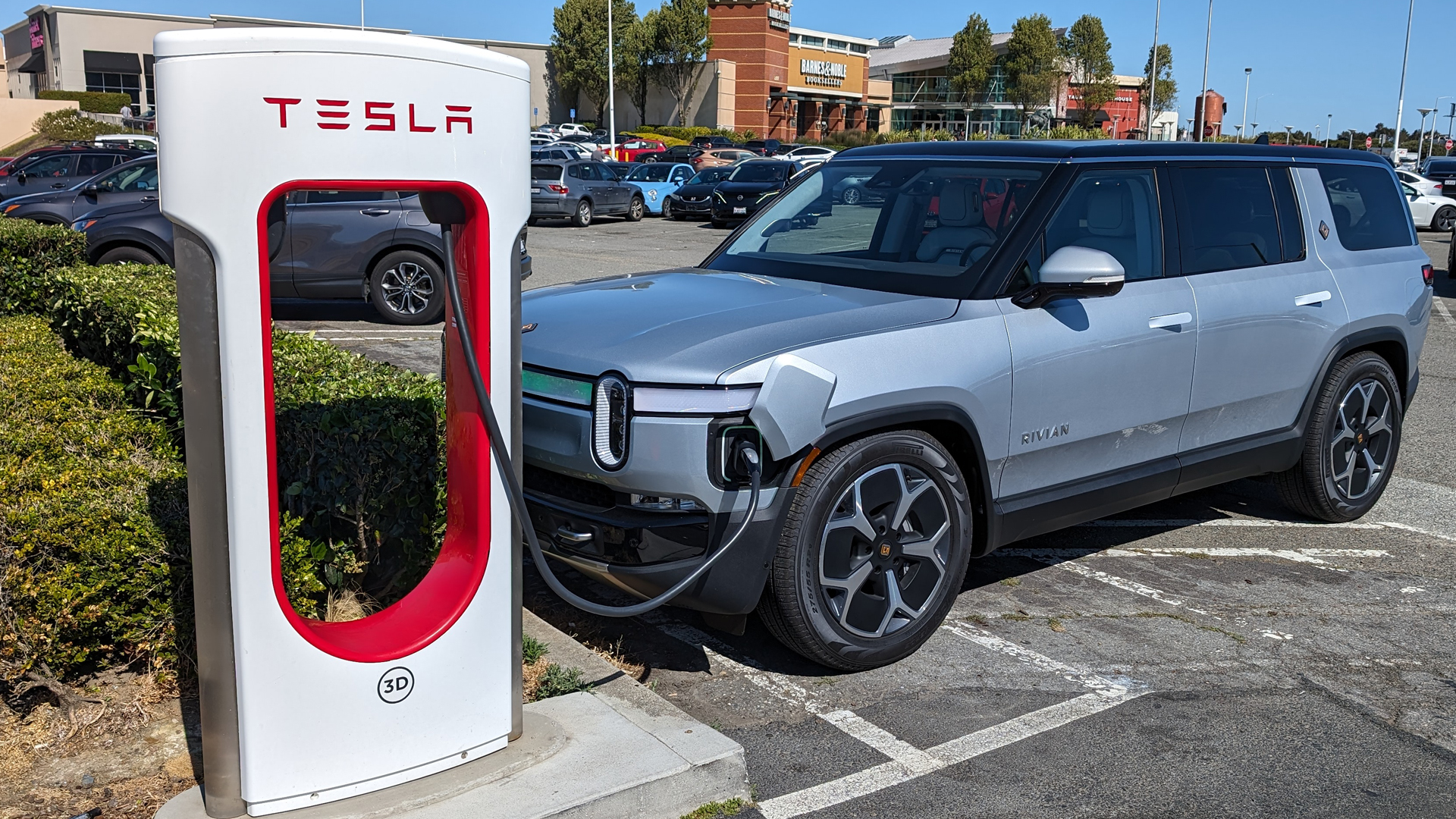
I’ve written before about the switch to NACS (North American Charging Standard) that’s taking place in the US and Canada. NACS is the charging system created by Tesla for use with its EVs and its vast Supercharger network in North America. Last year, pretty much all auto manufacturers agreed to switch from CCS1 – the previous charging standard – to NACS, and struck a deal with Tesla to access its Supercharger network.
There are several benefits to this transition. At the time of writing, Tesla’s Supercharger network counts about 26,000 DC fast chargers (NACS), while Electrify America – the second largest charging network – offers just 4,000 DC fast chargers (CCS1). While only 70% of Superchargers are compatible with non-Tesla EVs, it’s clear that having access to Tesla’s Supercharging network is a significant advantage.
In addition, with 99.97% uptime, the reliability of Tesla’s Supercharger network is significantly better than other US charging networks, which struggle to achieve just 75% uptime. Tesla’s Supercharger locations also have more stalls (usually eight, and often many more) than the competition, reducing potential wait times. Finally, the NACS plug is easier to handle than the bulky and awkward CCS1 plug, especially for people with disabilities.
Obviously, this switch will take a few years, and will initially require an adapter to allow CCS1 EVs to charge on NACS chargers like Tesla’s Superchargers. It will also require manufacturers to update the software in their EVs to support Tesla’s Superchargers with features like plug-and-charge, routing, and automatic payment. Tesla aside, the only two manufacturers that have access to the Supercharger network so far are Rivian and Ford.
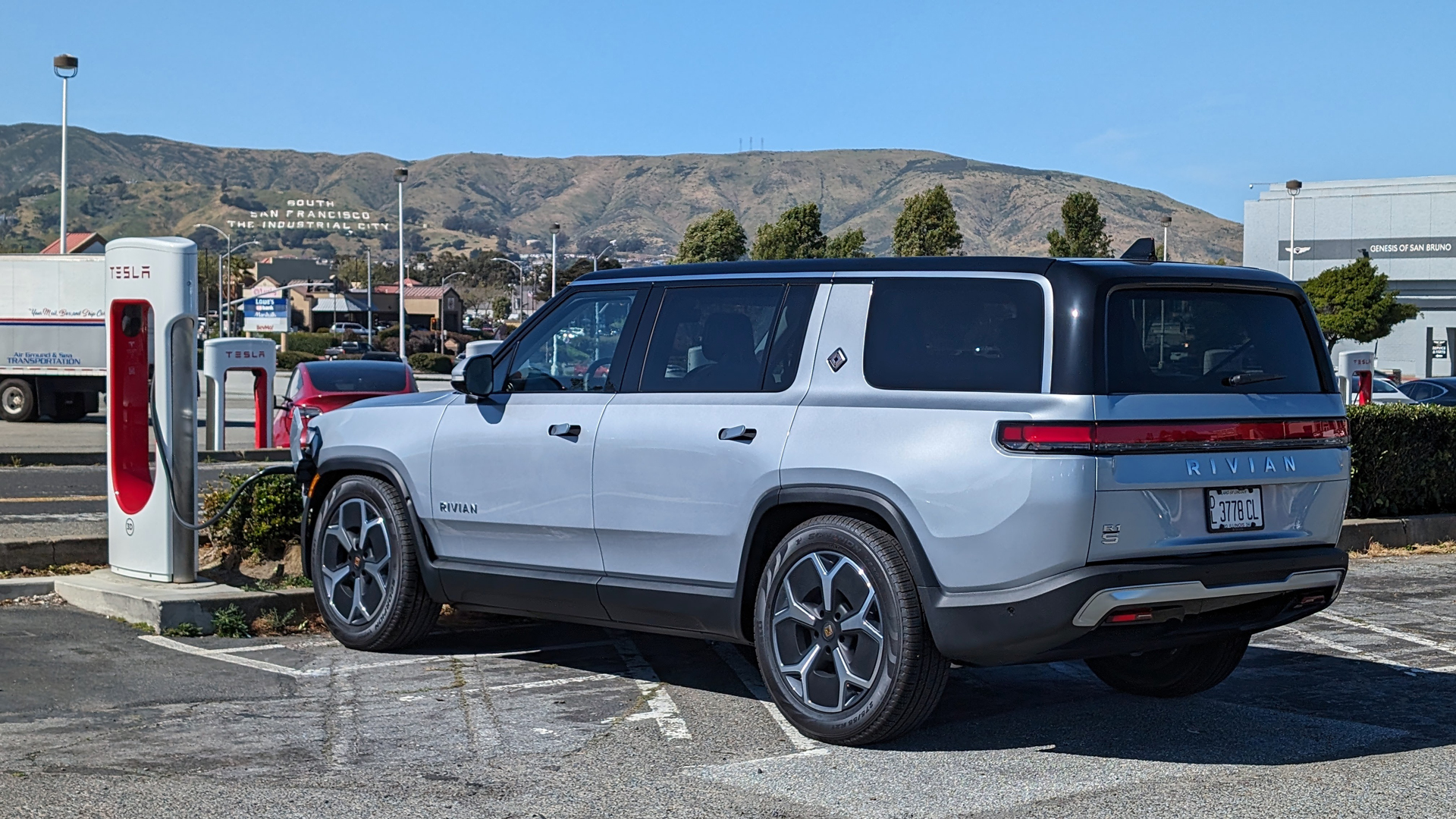
Rivian and Ford have entered the chat
As a Tesla owner of six years who often road trips up and down the West Coast, I’m familiar with the company’s Supercharger experience. It’s simply outstanding – a testament to Tesla’s vertically integrated ecosystem. So I was curious to find out what the Supercharger experience was like for Rivian and Ford drivers. To try it out, I borrowed an R1S – complete with a CCS1 to NACS adapter – from Rivian’s press fleet for a few days.
Unfortunately, Ford didn’t have a CCS1 to NACS adapter available for any of the EVs in its press fleet, so I ended up talking with Liv Leigh and Patrick Anderson of the Mach-E VLOG, a YouTube channel that covers Ford EVs in-depth, to find out the ins and outs of charging Ford EVs with Tesla Superchargers. Here’s what I learned.
Charging is as easy as 1, 2, 3
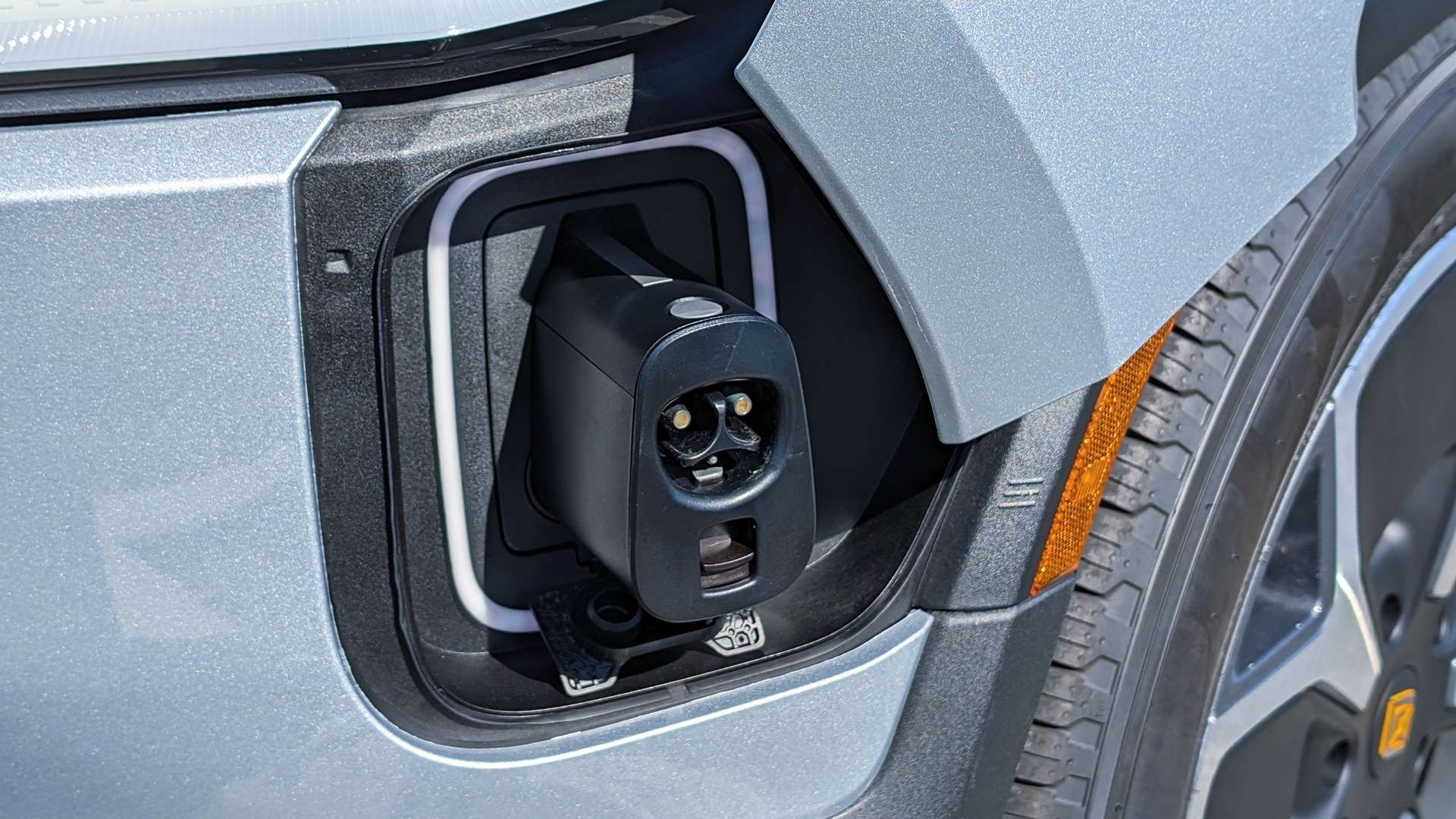
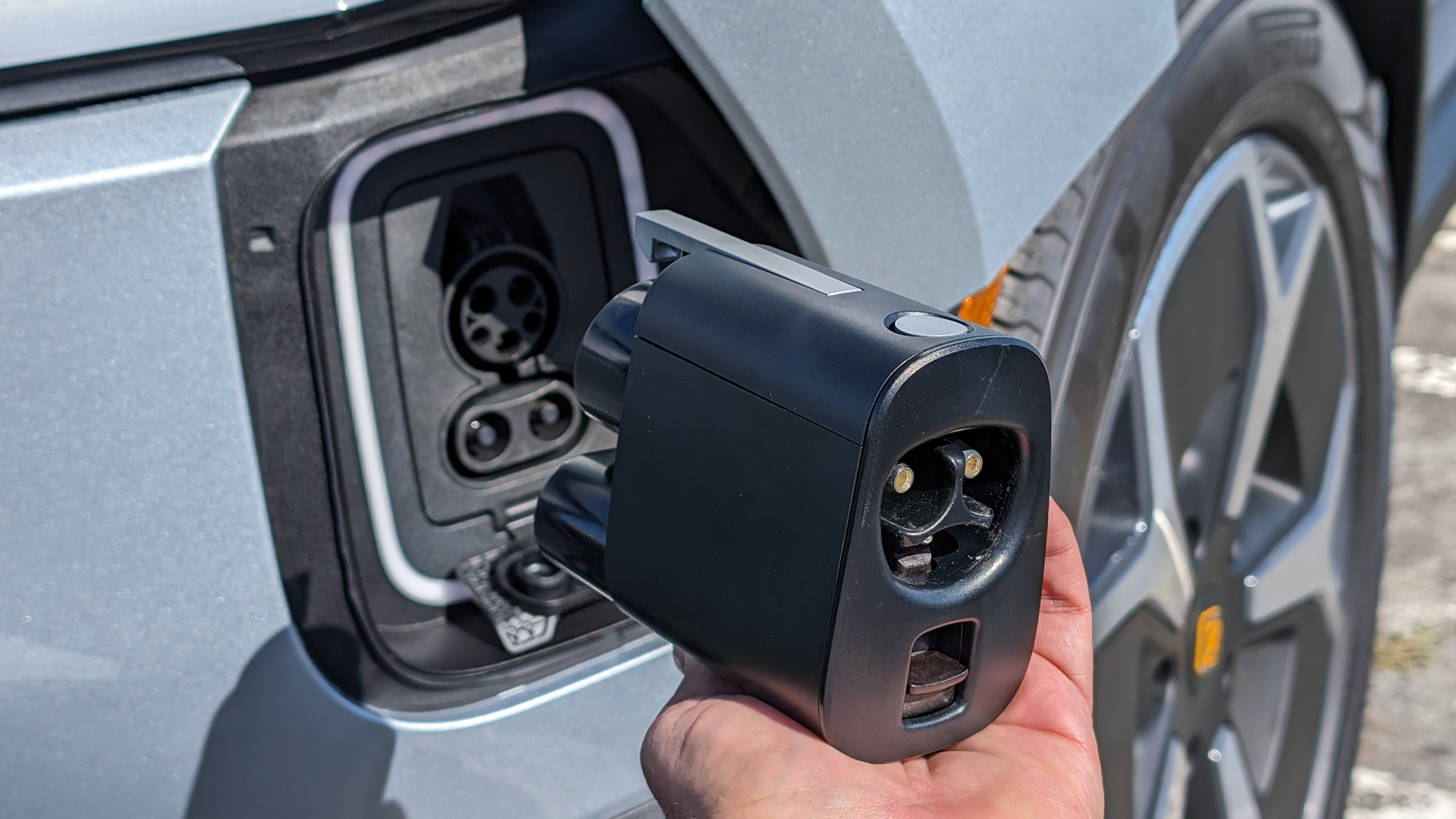
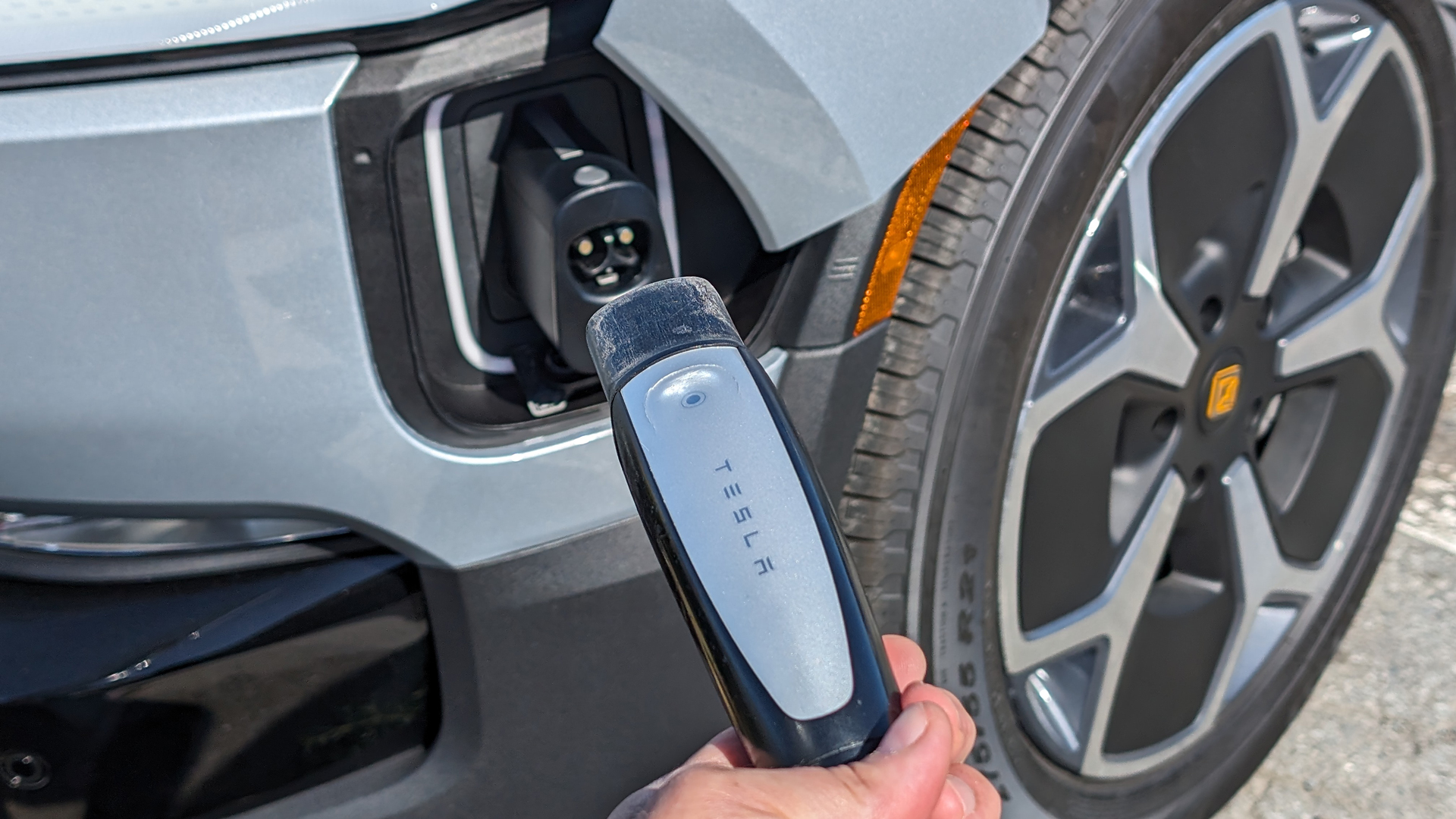
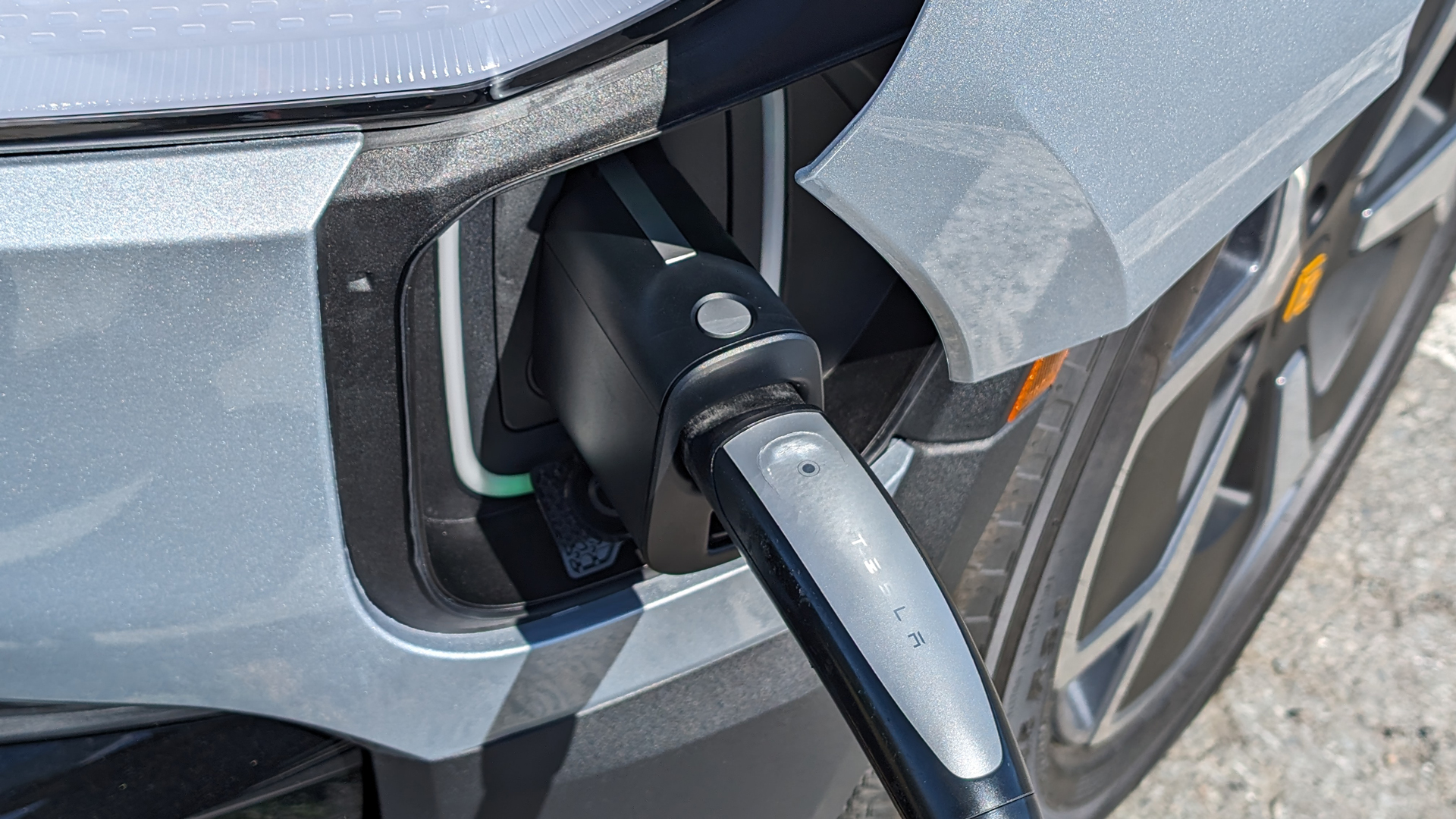
I’ll get into more details on how to find Tesla Superchargers below. But basically, on Rivian EVs, you can look for Superchargers using the navigation system on the center screen (just like on Tesla EVs), while on Ford EVs you have to use the Public Charging app in the infotainment display. You can also use the Rivian or FordPass apps on your phone, or a third-party app like PlugShare, which catalogs every EV charger worldwide.
Once you arrive at a Supercharger, simply find an empty stall, connect the CCS1 to NACS adapter to the charging cord, and plug the adapter into your EV’s charging port. Charging begins within a few seconds. This is called plug-and-charge because you don’t have to use an app or credit card to initiate charging. In fact, charging starts about as quickly as it does with Tesla EVs – and much faster than with other DC fast chargers.
It’s worth mentioning that plug-and-charge isn’t unique to Superchargers, but Tesla’s implementation is significantly more speedy and robust. There’s one caveat, however. Tesla EVs all have their charging port on the left side in the rear, so most Superchargers stalls are designed to be backed into. Rivian and Ford EVs all have their charging port on the left side but in the front, so you’ll have to pull forward into Superchargers stalls.
Since Superchargers were designed for Tesla EVs, they have short charging cords. As a result, you’ll be forced to use the Supercharger meant for the stall on your left, essentially taking up two stalls. Obviously, it’s important to be mindful of this and to try to park your Rivian or Ford EV in such a way as to avoid taking up two stalls – like on the right end of a row of Superchargers, or the other side of a row of stalls.
Payment is mostly seamless
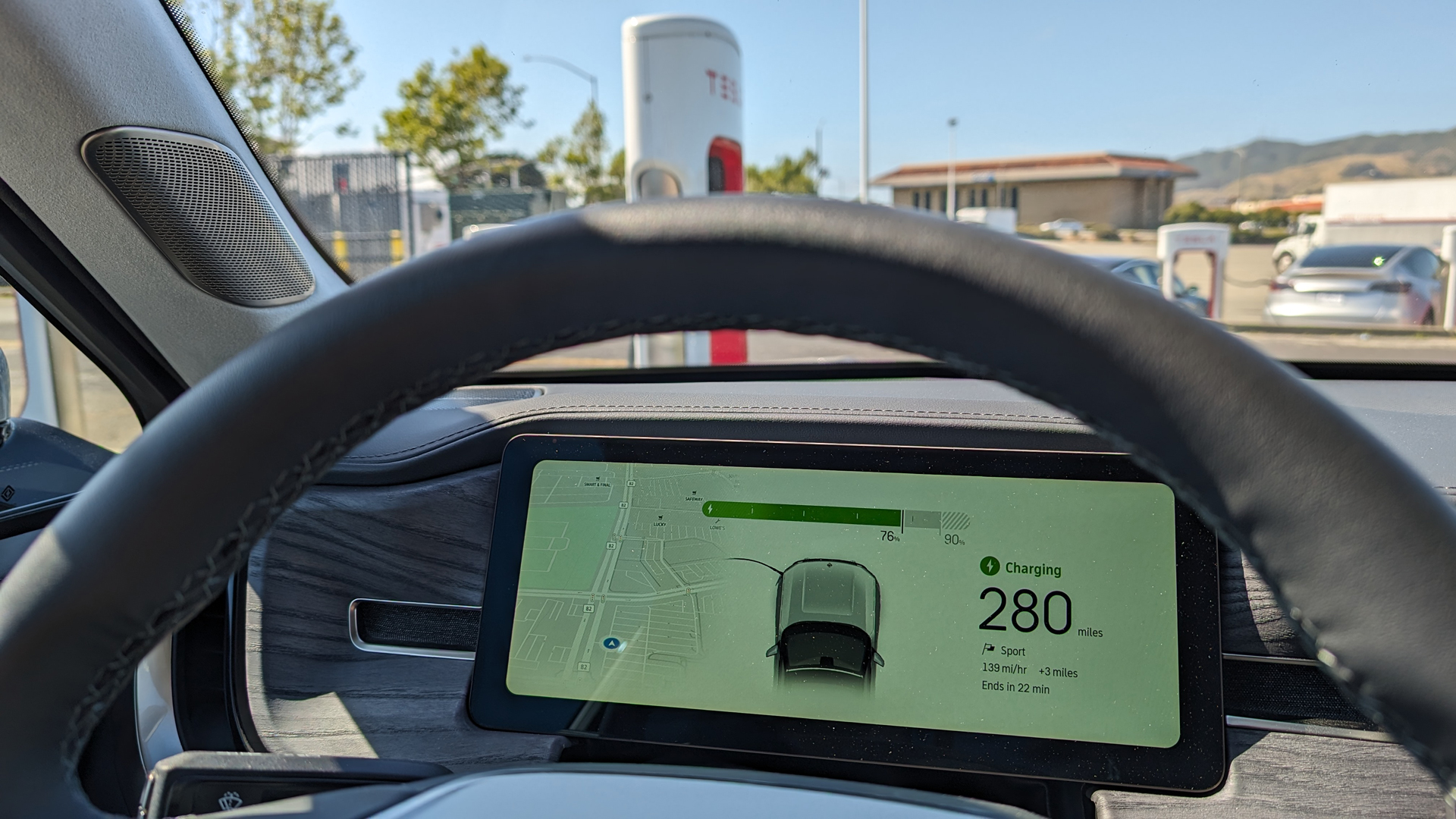
One of the big differences between Tesla Superchargers and other DC fast chargers is that most Superchargers don’t have a display or credit card reader. This is changing with v4 Superchargers, but few of these exist today. As such, plug-and-charge is the primary way to initiate charging on Superchargers with Rivian and Ford EVs. The other option is to use the Tesla app, but that’s less convenient.
So how does payment work? It’s handled automatically through your Rivian and or Ford account, so it’s seamless for plug-and-charge – just like with Tesla EVs. Automatic payment is where the partnership with Tesla really pays off (pardon the pun). But there are some drawbacks. By default, non-Tesla EVs pay a higher price per kWh than Tesla EVs, though Tesla offers a $12.99 per month Supercharging membership that restores price parity.
The problem is that you don’t benefit from your membership when using plug-and-charge with Rivian and Ford EVs. Right now, the only way to take advantage of your membership is to use the Tesla app to initiate charging – something that’s not remotely as seamless as just plugging in. It’s unclear when Rivian and Ford will support the Supercharging membership via plug-and-charge, but I presume it’s coming at some point.
Route planning is a work in progress
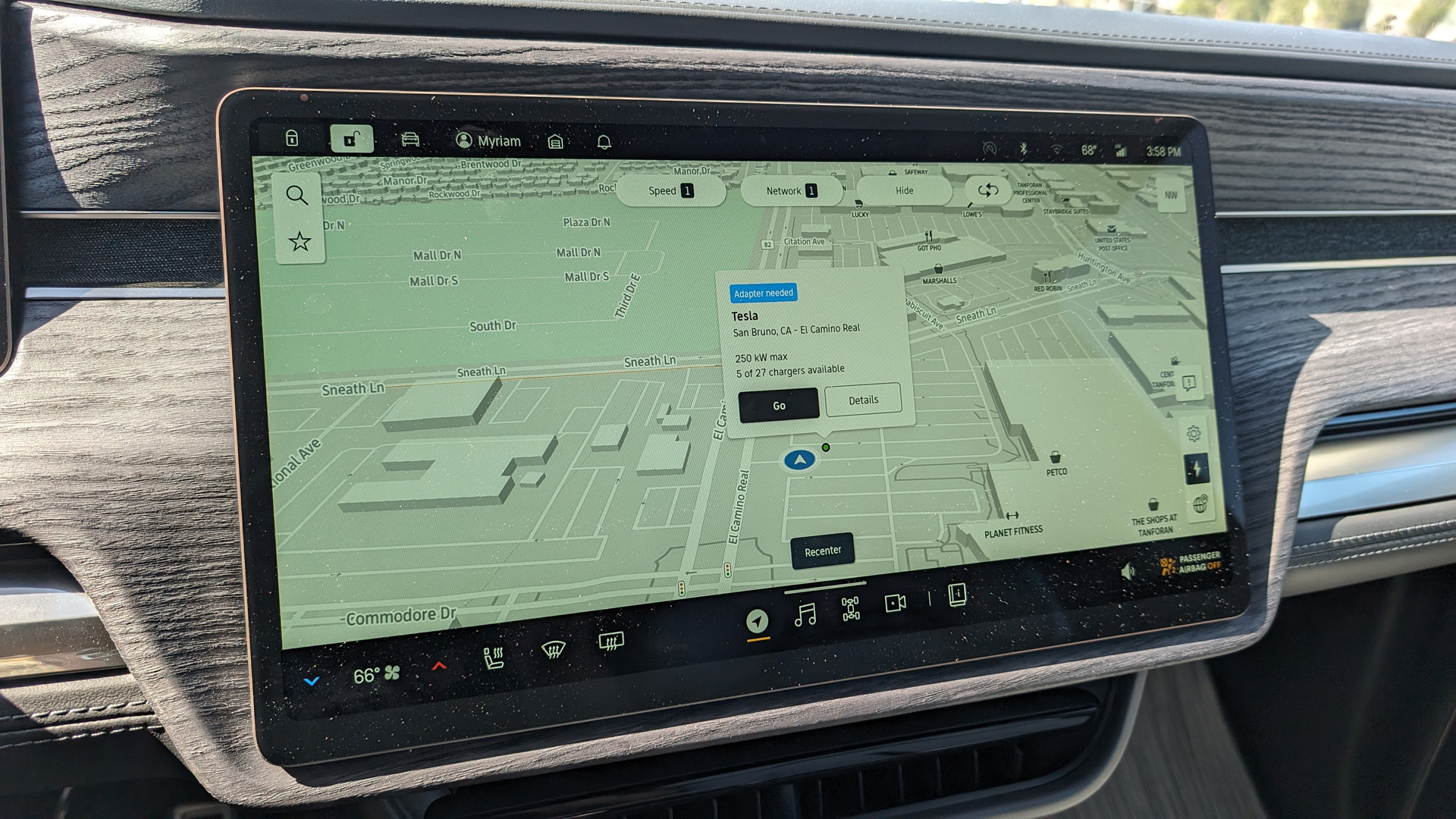
Route planning is another area where the Supercharger experience differs between Tesla, Rivian, and Ford EVs. Last year, I explained how critical it is for auto manufacturers to vertically integrate software, hardware, and services to deliver the best possible EV experience. Tesla’s route planning software is a prime example of how Tesla’s EVs and the Supercharger network function together as an ecosystem. I wrote:
“Say you want to drive between San Francisco and New York City. As soon as you enter your destination (by typing or using voice commands), Tesla’s route planning software looks at your current state of charge and battery temperature, and, knowing your car’s range, your driving style, the topography, weather, and traffic along the route, plus how busy the charging stations are, it maps out every charging stop along the way.
It tells you where you’ll stop and for how long, and shows you the cost and what amenities are available nearby. Better yet, the software will update the routing in real time as you’re driving and even pre-condition your car’s battery (heat it to the right temperature for fastest charging). At any given time Tesla knows how busy any Supercharger is, what stalls are available, and how many cars are in-route towards it.”
Rivian’s navigation system lets you locate compatible Tesla Superchargers (note: only 250kW v3 and v4 Superchargers are compatible with Rivian and Ford EVs) and check pricing and availability (empty stalls). Once you enter a destination, Rivian’s route planning software maps out every charging stop along the way, using Superchargers, Rivian Adventure Network DC fast chargers, and third-party DC fast chargers.
You can even filter out certain charging networks to plan a route using only Superchargers, for example. Regardless of which charging network you choose, Rivian’s software will pre-condition your EV’s battery for faster charging. You can also use the Rivian app to find Tesla Superchargers or plan trips. Unlike Tesla, Rivian’s route planning software does not account for how busy charging stations are (empty stalls).
Ford’s integration with Tesla’s Superchargers isn’t as polished as Rivian’s. The only way to locate Superchargers is to use the Public Charging app in the infotainment display or the FordPass app on your phone. Both will let you check pricing and availability (empty stalls). Unfortunately, Ford’s route planning software doesn’t include Superchargers yet, and it’s the only way to activate battery pre-conditioning.
As such, if you want to plan a trip with a Ford EV that includes Tesla Superchargers, you can’t simply use the navigation system or the FordPass app on your phone. Instead, you’ll have to use a third-party phone app like A Better Route Planner, and you won’t have any way to manually pre-condition your EV’s battery for faster charging. Obviously, that’s far from ideal, but I’m sure Ford is working on fixing this.
Is it worth it?
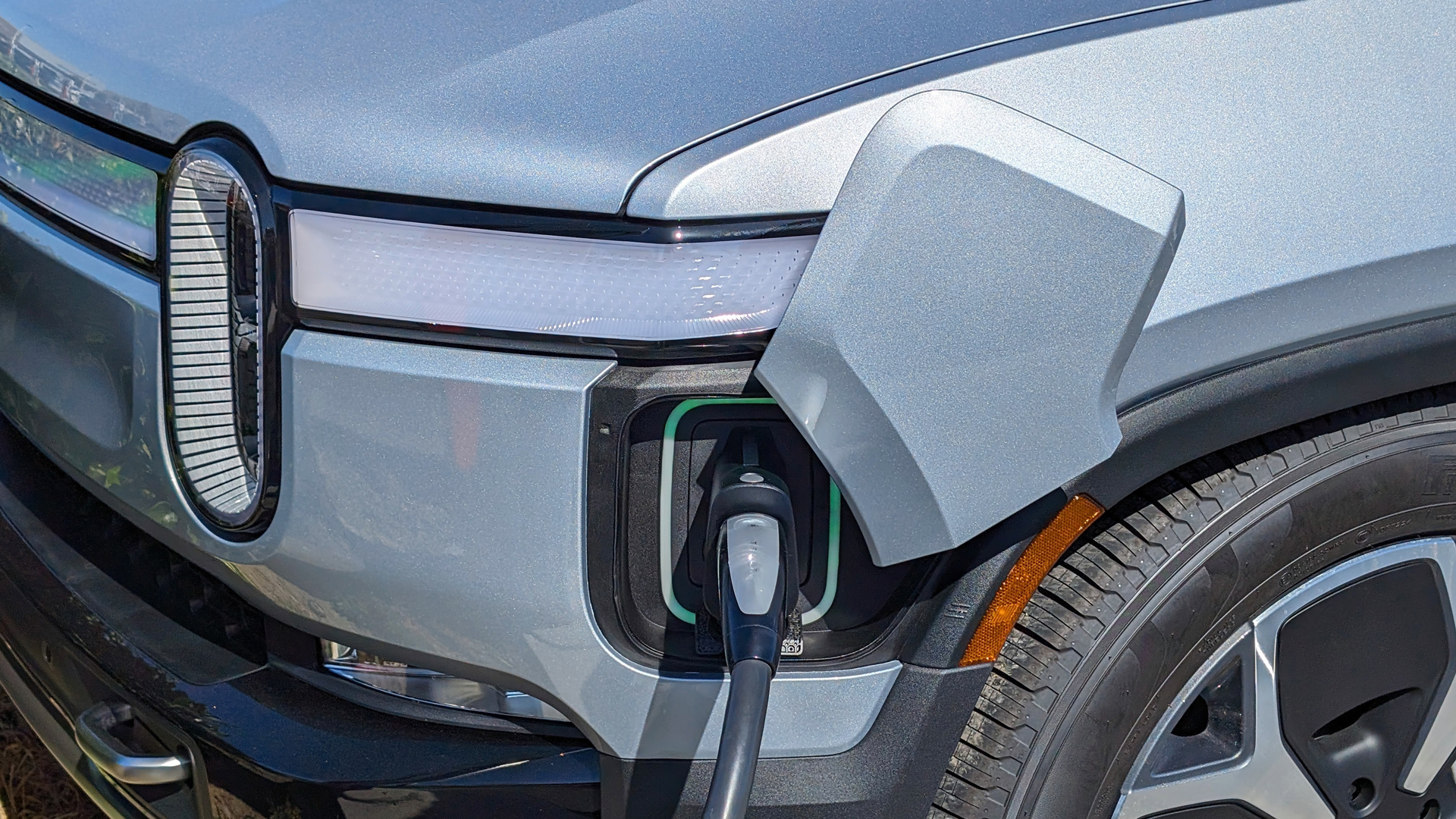
No doubt being able to charge at Tesla Superchargers is a game changer for Rivian and Ford EV drivers. Supercharger support basically triples the number DC fast chargers available to Rivian and Ford EVs during road trips, adding over 16,000 ultra-reliable and ubiquitous Superchargers to the map. This requires a CCS1 to NACS adapter, which Rivian and Ford are making available to owners for free.
Charging is as easy as plugging in, and payment is automatic, but route planning is one area where the Supercharger experience differs between Tesla, Rivian, and Ford EVs. Rivian’s route planning software is the closest to Tesla’s and only lacks some functionality, like the ability to take into account availability (empty stalls). Ford’s route planning software doesn’t include Superchargers yet, which is a bummer.
I’m sure that in time, OTA (over the air) software updates will remedy these shortcomings. Regardless, it's clear that Supercharger access is a competitive advantage for both Rivian and Ford today. I can’t wait for the other auto manufacturers to join the party!







